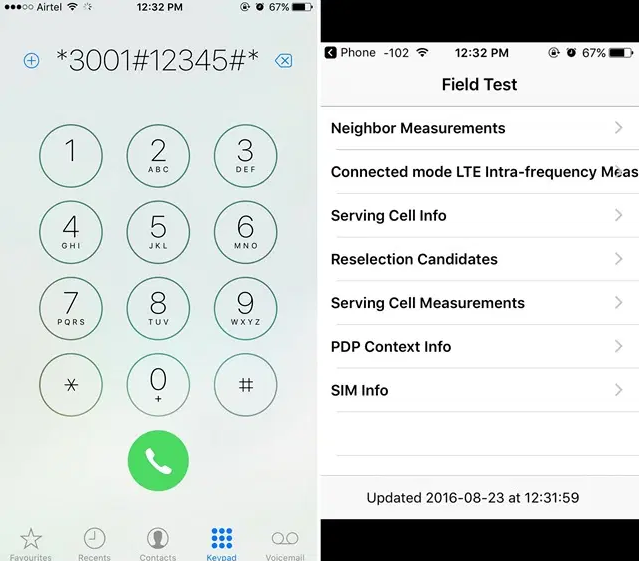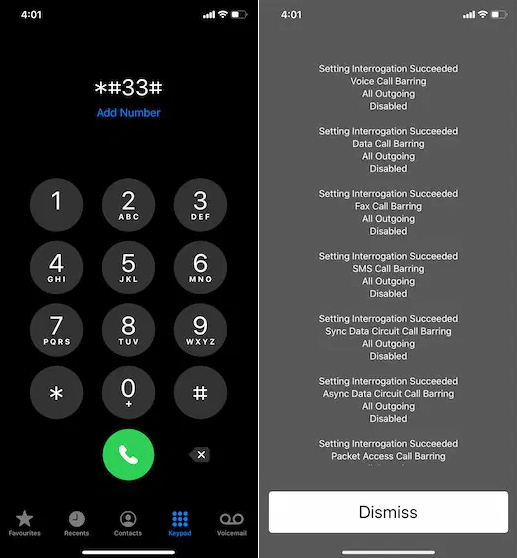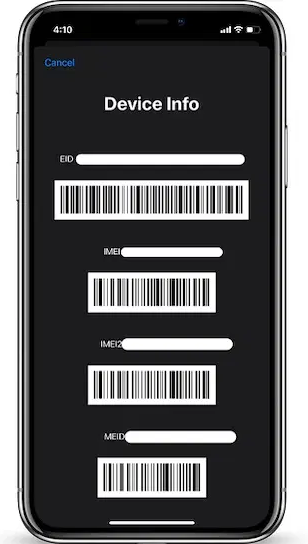The most Exciting and working secret codes iphone 2022.
What are secret codes exactly? They are USSD codes that provide some information when dialed from a mobile phone.
Android smartphones have their own unique secret codes, but each one is unique, derived by the manufacturer, making it difficult to keep them all straight.
Nonetheless, there are a number of cool iPhone secrets that everyone should know. Would you like to learn more? No problem! I have compiled a list of 10 iPhone secrets you must know in 2022.
Table of Contents
ToggleSecret Codes of iPhones 2026 – Easiest Ways to Use!
These 10 iPhone secret codes are not to be missed
Be aware that most of these codes are carrier-specific before you take a look at all the codes for iOS devices. Furthermore, the codes aren’t available everywhere because carriers are either unwilling or unable to embrace them.
Therefore, don’t be surprised if a few of those intriguing codes fail to work. So, now that we’ve cleared that up, shall we begin?
Code: *3001#12345#* Field Test Mode is triggered when this code is entered on the phone. This mode gives you information about your network, including technical details. Using this code, you can also check the signal strength of your network on your iPhone. You can use this code to determine the signal strength in decibels if you don’t want to use the bars. The steps are as follows: {} When you enter the code into the iPhone’s dialer, you’ll be redirected to the Field Test page, which will provide you with various network details. After that, simply hold down the power/lock button until “Slide to turn off” appears. You need to hold the home button while you’re on the power off-screen so you can see the network strength in decibels in place of the bars. The network should settle down after about 20-30 seconds. You can then take a note of your signal strength. If your signal strength is above -80 (-70,-60..), the network is pretty strong. If you have a signal strength below -110 (-120,130..), the network is pretty weak. If you are using a 3G or 4G network, the signal strength will be different. The easiest way to disable the decibels and regain the typical network bars on an iPhone is to open the Field Test page again with the secret code and tap on the top-left edge labelled “Phone” or by pressing the home button once. In iOS 11, Apple tweaked the functioning of “Field Test Mode.” For instance, it no longer displays dBM numbers (decibel milliwatts) on the iPhone status bar. With the Field Test Mode in iOS 13, iOS 12, and iOS 11, you can measure the actual signal strength as actual iPhone numbers. In order to use Field Test Mode, your iPhone must have cellular connectivity. To use it, launch the Phone app and dial the number below. *3001#12345#* Now, your iPhone will open the hidden Field Test Mode. After tapping LTE, select “Serving Cell Meas.” Then find the rsrp0 and corresponding number, which represents the cellular signal strength of your iPhone in dBm. If you’re unfamiliar with the term, it’s a variation of RSSI. Referencing signal received quality, or RSRQ, is what it stands for. RSRP0 represents your preliminary cell tower, whereas RSRP1 represents the next closest tower. Code: *31#mobile number You can use this secret code to present your caller ID as “Unknown” or “No Caller ID” if you have a carrier unlocked iPhone or a carrier that supports hiding your caller ID. Adding the number you want to call anonymously and pressing the button is all it takes. The only code you need to use is one that works in your country. The following codes are valid in different countries: Find: Code: *#5005*7672# Whenever you send a text message, the message first goes to a server or SM S center, which then forwards it to the recipient number. You can use this secret code to find out the SMS center number if you have been having issues with SMS. The iPhone’s dialer simply needs to be entered and “call” is pressed. Code: *#43# (Check Status) *43# (Enable Call Waiting) #43# (Disable Call Waiting) Using this code, you can enable or disable Call Waiting on iPhones quickly and easily. You can use this if you are having trouble finding your iPhone’s Call Waiting options. Code: *#33# (Check status) *33*pin# (Enable Call Barring) #33*pin# (Call Barring) You can use this code to check the status of Call Barring or enable/disable it on your iPhone. SIM pin is the lock on your SIM card, which is the “pin” here. You can enable it from the iPhone Settings->Phone->SIM PIN screen. Code: *#21# (Verify Status) *21# (Turn on/off call forwarding) *21mobilenumber# (Dial this number for diverted calls) Do you want to avoid being distracted while watching a sporting event? Using these codes to check its status on your phone or to enable it and divert calls to another number if you are unaware that Call Forwarding lets you do that. Code: *#30# Your number’s Calling Line Presentation may be preventing your caller from seeing your mobile number. Then, you can use this code to determine whether or not Call Line Presentation is enabled. Code: *#06# Are you aware of this code already? People may not be aware that all phones have a unique identification number that can be accessed via this USSD code. Code: *82 (followed by the number you are calling) For those who make all their incoming calls anonymously, this code is ideal. You can use this code to display your number on caller ID if you are one of them. Furthermore, it can also come in handy if you want to be sure that the call is from you. Several carriers use *82, but T-Mobile uses *31# instead. Code: 511 Since there are so many top-notch navigation apps, such as Google Maps, Apple Maps, Waze, and many others, this code may seem of no use in an age where you always have access to traffic information. In spite of this, I would still recommend saving it for times when you don’t have internet access and need accurate traffic information to reach your destination without getting stuck in a jam.1. Field Test Mode

In iOS 10 or Earlier
In iOS 11, 12, and 13
2. Hide Caller ID
Country
Code
Albania:
#31# (cell phones)
Argentina:
#31#
Australia:
1831
Denmark:
#31#
Canada:
#31#
France:
#31#
Germany:
*31# or #31#
Greece:
#31#
Hong Kong:
133
Iceland:
*31*
3. Check SMS Center
4. Call Waiting
5. Call Barring

6. Call Forwarding
7. Calling Line Presentation
8. IMEI

9. Show Your Number on Caller ID
10. Get Local Traffic Information
Bonus: View Your Cellular Data Usage
AT&T: *3282#
T-Mobile: #932#
Verizon: #3282
The following code might just turn out to be your savior if you often find your cellular data running out.
You can quickly figure out your data usage using this code, and then burn your plan accordingly to avoid it ending before the deadline. To learn more about the code, you need to contact your carrier.
Like the Cool iPhone Secret Codes?
Our discussion of iPhone secret codes has now covered a few of the cool ones. There are numerous other codes available online for the iPhone, but they do not actually work as they claim to.
These codes did work for us. Let us know if you were able to use them on your iPhone. Do you have any feedback? We’d love to hear from you.
Quick Links
